Theme Parks & Themed Entertainment
Mystic Manor is an Imagineering masterpiece, a seamless blend of storytelling and state-of-the-art technology
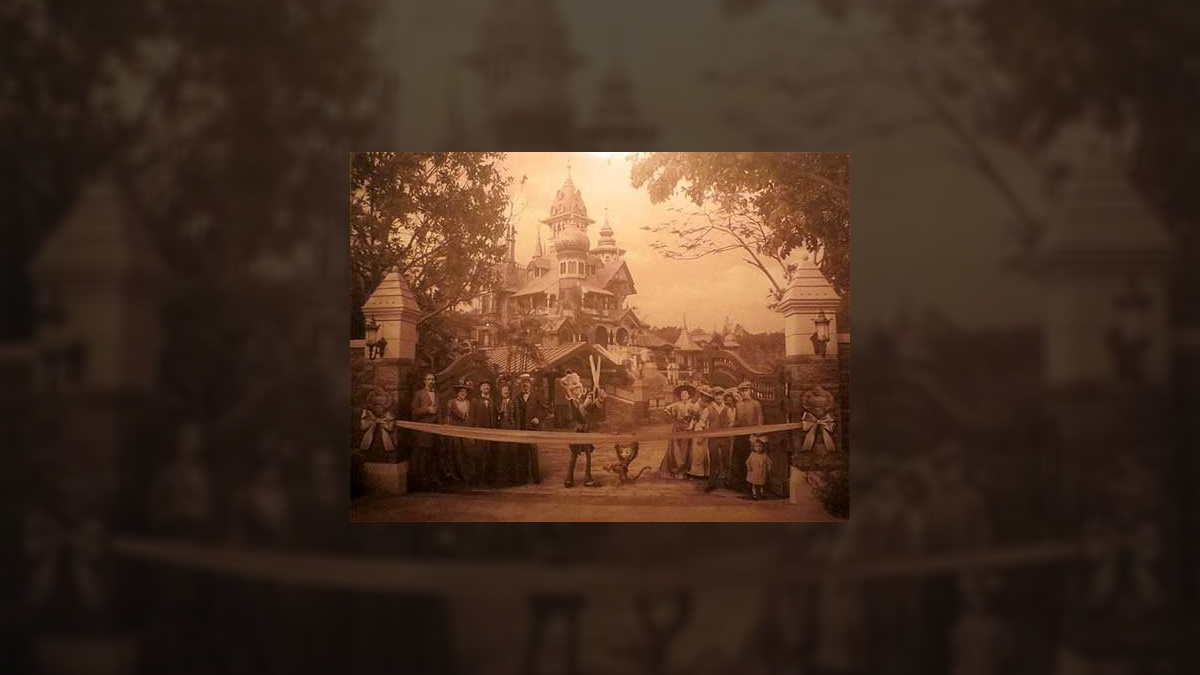
“Welcome one and all to Mystic Manor!”
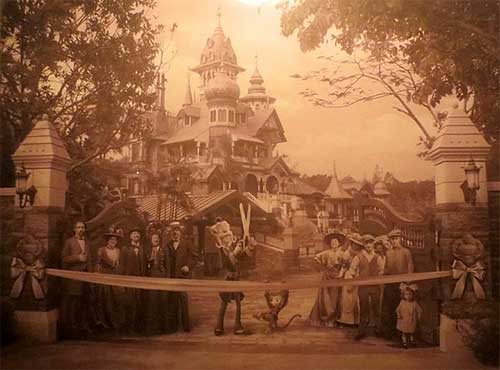
Copyright Disney Enterprises, Inc. All rights reserved
This is how Lord Henry Mystic welcomes visitors to his elegant
home during the brief, slide-driven pre-show for this new Hong Kong Disneyland
attraction. During which Mystic tells us a little bit about himself, his
companion Albert (a monkey), his world-class collection of antiquities and
artifacts (which we will soon see as we tour his mansion) as well as his latest
find: a music box.
Mind you, if I’d written the introduction to this new HKDL
attraction, it would been a little different. I would have said something along
the lines of:
“Welcome one and all to the most amazing ride that Walt Disney Imagineering
has built in the past 30 years!”
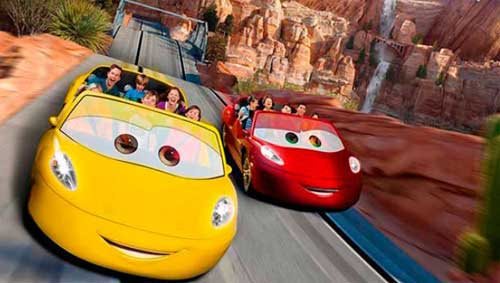
Copyright Disney Enterprises, Inc. All rights reserved
“Okay, wait,” I can already hear you saying.
” ‘Most amazing ride in 30 years?’ You mean that this attraction is actually
better than DCA‘s Radiator Springs Racers?”
You can bet your burning tires it is.
“Has better effects than Tower
of Terror?”

Copyright Disney Enterprises, Inc. / OLC, Ltd.
All rights reserved
Drop the comparison.
“Is even more magical than Universal‘s ‘Harry Potter
and the Forbidden Journey?” “
I feel like such a (golden) snitch for saying something like this. But it’s
true. It’s true.
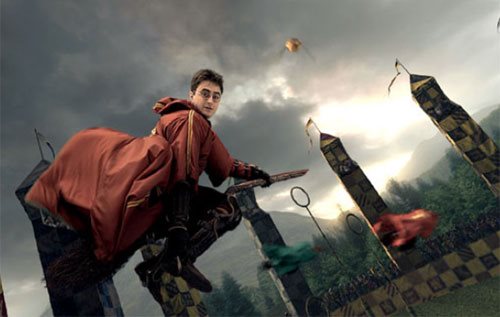
Copyright Warner Bros. / NBCUniversal. All rights reserved
We are talking a genuine theme park masterpiece, people. A
ride of the highest order built around — wonder of wonders — an original IP.
But why the “past-30-years” caveat? Well, I had to put some sort of time limit on this story. But
I could have just as easily said ” … an iconic attraction in the very
same league as Pirates of the Caribbean or The Haunted Mansion.” Seriously. It’s that good, folks. A brand-new classic straight out of the (music)
box.
And I do feel that I’m correct in comparing Mystic Manor to
The Haunted Mansion & Pirates of the Caribbean because — without the
artificial adrenaline rush that you get while riding Radiator Springs Racers,
Tower of Terror or Forbidden Journey (thanks to those attractions’ thrill
element) — Hong Kong Disneyland’s new must-see ride wins you over because it
plunks you down right in the middle of the fully-realized world of Lord Henry
Mystic & his monkey friend Albert and then moves you from room to room as
your eyes get to feast on modern age Imagineering at its very best.
But here. Let me illustrate (with some pictures which —
just in case people are concerned — I took using mostly available light and
very little flash. So that my need to document the real wonders found inside of
this attraction wouldn’t then ruin the enjoyment of the other HKDL Guests who
were experiencing this ride at the exact same time as I was) , why I believe
that this new ride by Imagineer Joe Lanzisero and his team is the very best that
anyone in themed entertainment has done in decades.

A scale model of Mystic Point gives one a general sense of how this recent
addition to Hong Kong Disneyland is laid out. Photo by Andrea Monti
To properly set the stage for this wonderful new attraction,
Mystic Manor is nestled in Hong Kong Disneyland’s Mystic Point. Which is a lush
new green area in this theme park that was added as part of the HKDL expansion
project that brought Grizzly Gulch and Toy Story Land.
Mystic Manor — very much like The Haunted Mansion at WDW‘s Magic
Kingdom — sits at the top of a
hill. And just like you do in Florida,
you enter this structure through an entrance on the lower left-hand side.
Though, in this case, the entrance is marked “Tour Entrance.”
But — just to be clear here — this HDKL attraction isn’t
some reimagined version of The Haunted Mansion. Phantom Manor 2.0, if you will.
No, Mystic Manor is a wholly original creation. Though — if you’re paying
attention — you’ll notice some fun nods to earlier Disney theme park
attractions (More on that later).
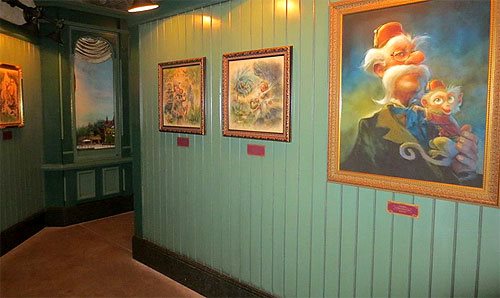
Photo by Andrea Monti
So you enter Manor through that “Tour Entrance”
and are immediately find yourself in this grand gallery of paintings and
artifacts. Mind you, the whole purpose of this space is to introduce you to
Lord Henry, his monkey companion Albert, his huge collection of antiquities and
S.E.A. (i.e., The Society of Explorers and Adventurers).
As you move through this space, you’ll see pictures of
various S.E.A. members during one of their more recent gatherings.
As a Disney Geek, one of the things that I most enjoyed
about Mystic Manor’s S.E.A.-related backstory was the all too obvious nods to
the late, great Adventurers Club at WDW’s Pleasure
Island and the Tokyo
DisneySea
version of The Tower of Terror. Which — because the Japanese weren’t all that
familiar with the “Twilight Zone” TV show — was built around a
brand-new character, Harrison Hightower III.

Copyright Disney Enterprises, Inc. All rights reserved
Who — if you’ll look closely — you’ll see is standing in the
left corner of the above painting.
And this is where a tip-of-the-hat has to go to Joe
Lanzisero. You see, Joe started working at Disney back in the 1970s as an
animator. And given that Lanzisero — now the senior vice-president of Walt
Disney Imagineering — wanted to make sure that Hong Kong Disneyland Guests
would immediately bond with Mystic Manor’s characters … Well, that is why —
falling back on his old animation skills — Joe had Lord Henry & Albert
designed with cartoon-like features (i.e., round eyes, big smiles, etc.).
As for the other members of S.E.A. that you can see in this
group portrait. If you’ll look closely, you’ll notice that they’re modeled
after Lanzisero himself and his two lead Imagineers on the Mystic Manor
project.

Photo by Andrea Monti
And given that music — as it always does in the very best
Disney theme park attractions — plays such a huge part in Mystic Manor’s
success … Well, it only made sense that Emmy & Grammy Award-winning
composer Danny Elfman (who is responsible for this ride’s haunting theme) would
wind up with a portrait of his own in this pre-show gallery space.
Now before we get started with talking about the specifics
of this attraction, I’d like to take a moment to discuss the ride system which
powers Mystic Manor. For the trackless vehicle at the very heart of this new
Hong Kong Disneyland attraction is a genuine breakthrough. Those who thought
that Mystic Manor’s ride system would just be a clone of the one which powers Pooh’s
Hunny Hunt at Tokyo Disneyland are in for a shock. For there have been plenty
of advances in the development of trackless vehicle technology over the past 10
years. And the Imagineers have taken full advantage of those advances.
One of the biggest innovations with Mystic Manor’s ride
system that this attraction’s ride vehicle is actually two vehicles in one.
First there’s the bottom-most portion of this vehicle which is where all of the
trackless ride technology is located. But then there’s the top-most portion of
this vehicle. Which has two rows of seats (which can hold a maximum of 3 Guests
each) which spin & move just like the Doombuggies do in The Haunted
Mansion.

Copyright Disney Enterprises, Inc.
All rights reserved
And in the Disney tradition of giving every piece of its
theme park attractions a bit of a backstory, the Imagineers have come up with a
mythology to explain the ride system that powers the Mystic Manor attraction.
According to the tale that WDI spins, the Mystic Magneto Electro Carriage (AKA
the trackless vehicle that zooms & spins through this attraction) is
actually an invention of Lord Henry himself. Who took this device to the 1900
Worlds Fair in Paris where it then
won first prize.
The best part of this next generation version of trackless ride technology is
that it allows Lanzisero and his team to use cinematic techniques to tell
Mystic Manor’s story. And just like in those classic Disney theme park rides
Pirates & Mansion, the ride system which powers this attraction — while
it’s ground-breaking and genuinely innovative — is always in service of this
ride’s story. Its main purpose is to tell a story by taking Hong Kong
Disneyland visitors on a journey through Lord Henry’s world.
And speaking of Mystic Manor’s story … It seems that Lord
Henry has just received this mysterious new artifact, a shining golden musical
box which Albert simply can’t keep his hands off of. Which this curious monkey
might be wise to do. For legend has it that — if this musical box is opened —
a magical tune will then begin to play which will then bring inanimate objects
to life.

Photo by Andrea Monti
Though Lord Henry quickly dismisses this tale, claiming the
legend of the music box to be just “superstitious nonsense,” he then
leaves us alone in the artifact cataloguing room. Albert now appears. And since
this curious monkey just can’t help himself, he lifts the lid of this legendary
music box … and as a strange golden light emanates from that box and then
travels through the room, musical magic begins to occur.
From this point on,
our Mystic Magneto Electro Carriages move through the various rooms of
Lord Mystic’s collection.
As our ride vehicles travel through the music room, the
instruments on display here glow with the music box’s mystical light and then
start playing Danny Elfman’s Mystic Manor theme.

Photo by Andrea Monti
Our Mystic Magneto Electro Carriages then move single file
through a Mediterranean-themed corridor full of Roman & Greek paintings and
artifacts. Which — once they also seemed to be touched by the magical golden
light that escaped from that music box — then come to life.
Albert is then trapped in the solarium by a carnivorous plant
which also snatches at us. Our ride vehicles then travel into the Slavic-Nordic
chamber where we see a painting of the sun turn into a snowstorm. Which then
sent the temperature of this room in the attraction tumbling.
Our Mystic Magneto Electro Carriages are then sent into
Mystic Manor’s Medieval Arts room where suits-of-armors come to life and
then wind up trapping poor Albert inside of a cannon.

Photo by Andrea Monti
From the Medieval Arts room, we head into the mansion’s
Egyptian gallery. Where — much in the style of an effect that’s seen in
Universal‘s “Revenge of the Mummy” coaster — we experience what it
must be like to have a sarcophagus full of bugs enter our ride vehicle.
In the next room of this Hong Kong Disneyland attraction …
Well, Lanzisero & his team obviously wanted to pay tribute to that classic
theme park attraction, Walt Disney’s Enchanted Tiki Room. Only this time
around, the Tikis are very, very large and menacing. And some of them even shoot
arrows at poor Albert.
Finally we reach Mystic Manor’s climax. Where — as our
Mystic Magneto Electro Carriages enter the Chinese room — we circle around a
giant statue of the Monkey King whilst the paintings on the walls start coming
to life. And as the music (which has gradually growing in urgency as we move
through this show building) reaches a crescendo, a hurricane-force wind seems to blow
the very walls of this room away. And this is where we see Albert frantically
trying to catch up with that music box.
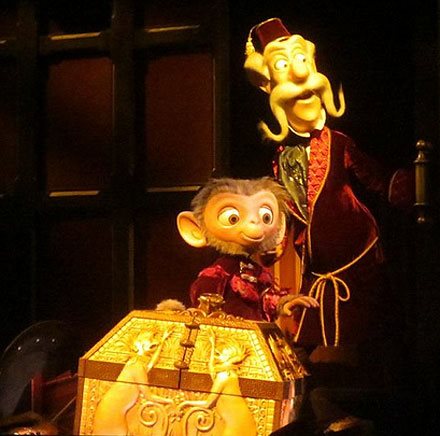
Photo by Andrea Monti
At the last possible second, Albert finally grabs the magic
box and slams down the lid. The very next moment, we’re back in the artifact cataloguing
room. Where everything seems to be just as it was before our adventure began. Lord
Henry then pops back into the room and asks Albert “You didn’t touch that
music box, did you now?” The curious monkey then dismissively waves his
hand as if to say “No way.” Lord Henry then smiles and says
“Good. Because who knows. That legend may just be true.”
And as we then head back to Mystic Manor’s off-load area, it’s impossible not to
smile. Given that we’ve just experienced an Imagineering masterpiece. A
distinctly Disney story told with great skill & charm in a theme park
setting.
Trust me, folks. Videos and photos really don’t do this
attraction justice. So if you want to experience the magic of Mystic Manor for
yourself, you’re just going to have to go to Hong Kong Disneyland. But don’t
worry. This ride is definitely worth the journey.
History
The Evolution and History of Mickey’s ToonTown

Disneyland in Anaheim, California, holds a special place in the hearts of Disney fans worldwide, I mean heck, it’s where the magic began after all. Over the years it’s become a place that people visit in search of memorable experiences. One fan favorite area of the park is Mickey’s Toontown, a unique land that lets guests step right into the colorful, “Toony” world of Disney animation. With the recent reimagining of the land and the introduction of Micky and Minnies Runaway Railway, have you ever wondered how this land came to be?
There is a fascinating backstory of how Mickey’s Toontown came into existence. It’s a tale of strategic vision, the influence of Disney executives, and a commitment to meeting the needs of Disney’s valued guests.
The Beginning: Mickey’s Birthdayland
The story of Mickey’s Toontown starts with Mickey’s Birthdayland at Walt Disney World’s Magic Kingdom. Opened in 1988 to celebrate Mickey Mouse’s 60th birthday, this temporary attraction was met with such overwhelming popularity that it inspired Disney executives to think bigger. The idea was to create a permanent, immersive land where guests could step into the animated world of Mickey Mouse and his friends.
In the early ’90s, Disneyland was in need of a refresh. Michael Eisner, the visionary leader of The Walt Disney Company at the time, had an audacious idea: create a brand-new land in Disneyland that would celebrate Disney characters in a whole new way. This was the birth of Mickey’s Toontown.
Initially, Disney’s creative minds toyed with various concepts, including the idea of crafting a 100-Acre Woods or a land inspired by the Muppets. However, the turning point came when they considered the success of “Who Framed Roger Rabbit.” This film’s popularity and the desire to capitalize on contemporary trends set the stage for Toontown’s creation.
From Concept to Reality: The Birth of Toontown
In 1993, Mickey’s Toontown opened its gates at Disneyland, marking the first time in Disney Park history where guests could experience a fully realized, three-dimensional world of animation. This new land was not just a collection of attractions but a living, breathing community where Disney characters “lived,” worked, and played.
Building Challenges: Innovative Solutions
The design of Mickey’s Toontown broke new ground in theme park aesthetics. Imagineers were tasked with bringing the two-dimensional world of cartoons into a three-dimensional space. This led to the creation of over 2000 custom-built props and structures that embodied the ‘squash and stretch’ principle of animation, giving Toontown its distinctiveness.
And then there was also the challenge of hiding the Team Disney Anaheim building, which bore a striking resemblance to a giant hotdog. The Imagineers had to think creatively, using balloon tests and imaginative landscaping to seamlessly integrate Toontown into the larger park.

Key Attractions: Bringing Animation to Life
Mickey’s Toontown featured several groundbreaking attractions. “Roger Rabbit’s Car Toon Spin,” inspired by the movie “Who Framed Roger Rabbit,” became a staple of Toontown, offering an innovative ride experience. Gadget’s Go-Coaster, though initially conceived as a Rescue Rangers-themed ride, became a hit with younger visitors, proving that innovative design could create memorable experiences for all ages.
Another crown jewel of Toontown is Mickey’s House, a walkthrough attraction that allowed guests to explore the home of Mickey Mouse himself. This attraction was more than just a house; it was a carefully crafted piece of Disney lore. The house was designed in the American Craftsman style, reflecting the era when Mickey would have theoretically purchased his first home in Hollywood. The attention to detail was meticulous, with over 2000 hand-crafted, custom-built props, ensuring that every corner of the house was brimming with character and charm. Interestingly, the design of Mickey’s House was inspired by a real home in Wichita Falls, making it a unique blend of real-world inspiration and Disney magic.
Mickey’s House also showcased Disney’s commitment to creating interactive and engaging experiences. Guests could make themselves at home, sitting in Mickey’s chair, listening to the radio, and exploring the many mementos and references to Mickey’s animated adventures throughout the years. This approach to attraction design – where storytelling and interactivity merged seamlessly – was a defining characteristic of ToonTown’s success.

Executive Decisions: Shaping ToonTown’s Unique Attractions
The development of Mickey’s Toontown wasn’t just about creative imagination; it was significantly influenced by strategic decisions from Disney executives. One notable input came from Jeffrey Katzenberg, who suggested incorporating a Rescue Rangers-themed ride. This idea was a reflection of the broader Disney strategy to integrate popular contemporary characters and themes into the park, ensuring that the attractions remained relevant and engaging for visitors.
In addition to Katzenberg’s influence, Frank Wells, the then-President of The Walt Disney Company, played a key role in the strategic launch of Toontown’s attractions. His decision to delay the opening of “Roger Rabbit’s Car Toon Spin” until a year after Toontown’s debut was a calculated move. It was designed to maintain public interest in the park by offering new experiences over time, thereby giving guests more reasons to return to Disneyland.
These executive decisions highlight the careful planning and foresight that went into making Toontown a dynamic and continuously appealing part of Disneyland. By integrating current trends and strategically planning the rollout of attractions, Disney executives ensured that Toontown would not only capture the hearts of visitors upon its opening but would continue to draw them back for new experiences in the years to follow.
Global Influence: Toontown’s Worldwide Appeal
The concept of Mickey’s Toontown resonated so strongly that it was replicated at Tokyo Disneyland and influenced elements in Disneyland Paris and Hong Kong Disneyland. Each park’s version of Toontown maintained the core essence of the original while adapting to its cultural and logistical environment.
Evolution and Reimagining: Toontown Today
As we approach the present day, Mickey’s Toontown has recently undergone a significant reimagining to welcome “Mickey & Minnie’s Runaway Railway” in 2023. This refurbishment aimed to enhance the land’s interactivity and appeal to a new generation of Disney fans, all while retaining the charm that has made ToonTown a beloved destination for nearly three decades.

Dive Deeper into ToonTown’s Story
Want to know more about Mickey’s Toontown and hear some fascinating behind-the-scenes stories, then check out the latest episode of Disney Unpacked on Patreon @JimHillMedia. In this episode, the main Imagineer who worked on the Toontown project shares lots of interesting stories and details that you can’t find anywhere else. It’s full of great information and fun facts, so be sure to give it a listen!
History
Unpacking the History of the Pixar Place Hotel

Pixar Place Hotel, the newly unveiled 15-story tower at the Disneyland Resort, has been making waves in the Disney community. With its unique Pixar-themed design, it promises to be a favorite among visitors.
However, before we delve into this exciting addition to the Disneyland Resort, let’s take a look at the fascinating history of this remarkable hotel.
The Emergence of the Disneyland Hotel
To truly appreciate the story of the Pixar Place Hotel, we must turn back the clock to the early days of Disneyland. While Walt Disney had the visionary ideas and funding to create the iconic theme park, he faced a challenge when it came to providing accommodations for the park’s visitors. This is where his friend Jack Wrather enters the picture.
Jack Wrather, a fellow pioneer in the television industry, stepped in to assist Walt Disney in realizing his dream. Thanks to the success of the “Lassie” TV show produced by Wrather’s company, he had the financial means to build a hotel right across from Disneyland.
The result was the Disneyland Hotel, which opened its doors in October 1955. Interestingly, the early incarnation of this hotel had more of a motel feel than a hotel, with two-story buildings reminiscent of the roadside motels popular during the 1950s. The initial Disneyland Hotel consisted of modest structures that catered to visitors looking for affordable lodging close to the park. While the rooms were basic, it marked the beginning of something extraordinary.
The Evolution: From Emerald of Anaheim to Paradise Pier
As Disneyland’s popularity continued to soar, so did the demand for expansion and improved accommodations. In 1962, the addition of an 11-story tower transformed the Disneyland Hotel, marking a significant transition from a motel to a full-fledged hotel.
The addition of the 11-story tower elevated the Disneyland Hotel into a more prominent presence on the Anaheim skyline. At the time, it was the tallest structure in all of Orange County. The hotel’s prime location across from Disneyland made it an ideal choice for visitors. With the introduction of the monorail linking the park and the hotel, accessibility became even more convenient. Unique features like the Japanese-themed reflecting pools added to the hotel’s charm, reflecting a cultural influence that extended beyond Disney’s borders.
Japanese Tourism and Its Impact
During the 1960s and 1970s, Disneyland was attracting visitors from all corners of the world, including Japan. A significant number of Japanese tourists flocked to Anaheim to experience Walt Disney’s creation. To cater to this growing market, it wasn’t just the Disneyland Hotel that aimed to capture the attention of Japanese tourists. The Japanese Village in Buena Park, inspired by a similar attraction in Nara, Japan, was another significant spot.
These attractions sought to provide a taste of Japanese culture and hospitality, showcasing elements like tea ceremonies and beautiful ponds with rare carp and black swans. However, the Japanese Village closed its doors in 1975, likely due to the highly competitive nature of the Southern California tourist market.
The Emergence of the Emerald of Anaheim
With the surge in Japanese tourism, an opportunity arose—the construction of the Emerald of Anaheim, later known as the Disneyland Pacific Hotel. In May 1984, this 15-story hotel opened its doors.
What made the Emerald unique was its ownership. It was built not by The Walt Disney Company or the Oriental Land Company (which operated Tokyo Disneyland) but by the Tokyu Group. This group of Japanese businessmen already had a pair of hotels in Hawaii and saw potential in Anaheim’s proximity to Disneyland. Thus, they decided to embark on this new venture, specifically designed to cater to Japanese tourists looking to experience Southern California.
Financial Challenges and a Changing Landscape
The late 1980s brought about two significant financial crises in Japan—the crash of the NIKKEI stock market and the collapse of the Japanese real estate market. These crises had far-reaching effects, causing Japanese tourists to postpone or cancel their trips to the United States. As a result, reservations at the Emerald of Anaheim dwindled.
To adapt to these challenging times, the Tokyu Group merged the Emerald brand with its Pacific hotel chain, attempting to weather the storm. However, the financial turmoil took its toll on the Emerald, and changes were imminent.
The Transition to the Disneyland Pacific Hotel
In 1995, The Walt Disney Company took a significant step by purchasing the hotel formerly known as the Emerald of Anaheim for $35 million. This acquisition marked a change in the hotel’s fortunes. With Disney now in control, the hotel underwent a name change, becoming the Disneyland Pacific Hotel.
Transformation to Paradise Pier
The next phase of transformation occurred when Disney decided to rebrand the hotel as Paradise Pier Hotel. This decision aligned with Disney’s broader vision for the Disneyland Resort.
While the structural changes were limited, the hotel underwent a significant cosmetic makeover. Its exterior was painted to complement the color scheme of Paradise Pier, and wave-shaped crenellations adorned the rooftop, creating an illusion of seaside charm. This transformation was Disney’s attempt to seamlessly integrate the hotel into the Paradise Pier theme of Disney’s California Adventure Park.
Looking Beyond Paradise Pier: The Shift to Pixar Place
In 2018, Disneyland Resort rebranded Paradise Pier as Pixar Pier, a thematic area dedicated to celebrating the beloved characters and stories from Pixar Animation Studios. As a part of this transition, it became evident that the hotel formally known as the Disneyland Pacific Hotel could no longer maintain its Paradise Pier theme.
With Pixar Pier in full swing and two successful Pixar-themed hotels (Toy Story Hotels in Shanghai Disneyland and Tokyo Disneyland), Disney decided to embark on a new venture—a hotel that would celebrate the vast world of Pixar. The result is Pixar Place Hotel, a 15-story tower that embraces the characters and stories from multiple Pixar movies and shorts. This fully Pixar-themed hotel is a first of its kind in the United States.
The Future of Pixar Place and Disneyland Resort
As we look ahead to the future, the Disneyland Resort continues to evolve. The recent news of a proposed $1.9 billion expansion as part of the Disneyland Forward project indicates that the area surrounding Pixar Place is expected to see further changes. Disneyland’s rich history and innovative spirit continue to shape its destiny.
In conclusion, the history of the Pixar Place Hotel is a testament to the ever-changing landscape of Disneyland Resort. From its humble beginnings as the Disneyland Hotel to its transformation into the fully Pixar-themed Pixar Place Hotel, this establishment has undergone several iterations. As Disneyland Resort continues to grow and adapt, we can only imagine what exciting developments lie ahead for this iconic destination.
If you want to hear more stories about the History of the Pixar Place hotel, check our special edition of Disney Unpacked over on YouTube.
Stay tuned for more updates and developments as we continue to explore the fascinating world of Disney, one story at a time.
History
From Birthday Wishes to Toontown Dreams: How Toontown Came to Be

In the latest release of Episode 4 of Disney Unpacked, Len and I return, joined as always by Disney Imagineering legend, Jim Shull. This two-part episode covers all things Mickey’s Birthday Land and how it ultimately led to the inspiration behind Disneyland’s fan-favorite land, “Toontown”. But let’s not get ahead of ourselves here. It all starts in the early days at Disneyland.
Early Challenges in Meeting Mickey
Picture this: it’s the late 1970s and early 1980s, and you’re at Disneyland. You want to meet the one and only Mickey Mouse, but there’s no clear way to make it happen. You rely on Character Guides, those daily printed sheets that point you in Mickey’s general direction. But let’s be honest, it was like finding a needle in a haystack. Sometimes, you got lucky; other times, not so much.

Mickey’s Birthdayland: A Birthday Wish that Came True
Fast forward to the late 1980s. Disney World faced a big challenge. The Disney-MGM Studios Theme Park was under construction, with the company’s marketing machine in full swing, hyping up the opening of Walt Disney World’s third theme park, MGM Studios, in the Spring of 1989. This extensive marketing meant that many people were opting to postpone their family’s next trip to Walt Disney World until the following year. Walt Disney World needed something compelling to motivate guests to visit Florida in 1988, the year before Disney MGM Studios opened.
Enter stage left, Mickey’s Birthdayland. For the first time ever, an entire land was dedicated to a single character – and not just any character, but the mouse who started it all. Meeting Mickey was no longer a game of chance; it was practically guaranteed.

The Birth of Birthdayland: Creative Brilliance Meets Practicality
In this episode, we dissect the birth of Mickey’s Birthdayland, an initiative that went beyond celebrating a birthday. It was a calculated move, driven by guest feedback and a need to address issues dating back to 1971. Imagineers faced the monumental task of designing an experience that honored Mickey while efficiently managing the crowds. This required the perfect blend of creative flair and logistical prowess – a hallmark of Disney’s approach to theme park design.
Evolution: From Birthdayland to Toontown
The success of Mickey’s Birthdayland was a real game-changer, setting the stage for the birth of Toontown – an entire land that elevated character-centric areas to monumental new heights. Toontown wasn’t merely a spot to meet characters; it was an immersive experience that brought Disney animation to life. In the episode, we explore its innovative designs, playful architecture, and how every nook and cranny tells a story.

Impact on Disney Parks and Guests
Mickey’s Birthdayland and Toontown didn’t just reshape the physical landscape of Disney parks; they transformed the very essence of the guest experience. These lands introduced groundbreaking ways for visitors to connect with their beloved characters, making their Disney vacations even more unforgettable.
Beyond Attractions: A Cultural Influence
But the influence of these lands goes beyond mere attractions. Our episode delves into how Mickey’s Birthdayland and Toontown left an indelible mark on Disney’s culture, reflecting the company’s relentless dedication to innovation and guest satisfaction. It’s a journey into how a single idea can grow into a cherished cornerstone of the Disney Park experience.

Unwrapping the Full Story of Mickey’s Birthdayland
Our two-part episode of Disney Unpacked is available for your viewing pleasure on our Patreon page. And for those seeking a quicker Disney fix, we’ve got a condensed version waiting for you on our YouTube channel. Thank you for being a part of our Disney Unpacked community. Stay tuned for more episodes as we continue to “Unpack” the fascinating world of Disney, one story at a time.
-
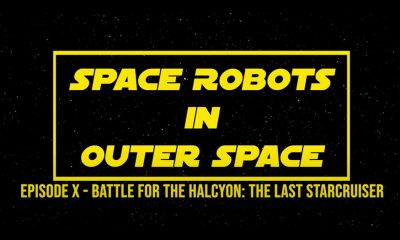
 News & Press Releases12 months ago
News & Press Releases12 months agoStar Wars Spoof: Space Robots in Outer Space Ep X: Battle for the Halcyon: The Last Starcruiser
-

 History11 months ago
History11 months ago31 Long-Gone Rides, Shows & Attractions at Disney-MGM (Hollywood Studios)
-

 News & Press Releases8 months ago
News & Press Releases8 months agoDisney Will Bring D23: The Ultimate Disney Fan Event to Anaheim, California in August 2024
-

 Theme Parks & Themed Entertainment11 months ago
Theme Parks & Themed Entertainment11 months agoFrom Aladdin to Indy – How Did We Get an Indiana Jones Stage Show at Disneyland?
-

 History3 months ago
History3 months agoFrom Birthday Wishes to Toontown Dreams: How Toontown Came to Be
-

 Theme Parks & Themed Entertainment12 months ago
Theme Parks & Themed Entertainment12 months agoHow Did We Get “Aladdin’s Oasis” at Disneyland?
-

 Theme Parks & Themed Entertainment10 months ago
Theme Parks & Themed Entertainment10 months agoWhen WDW Had a Racetrack – The Creation of the Walt Disney World Speedway
-

 Film & Movies10 months ago
Film & Movies10 months ago“Indiana Jones and the Search for Indiana Jones”








